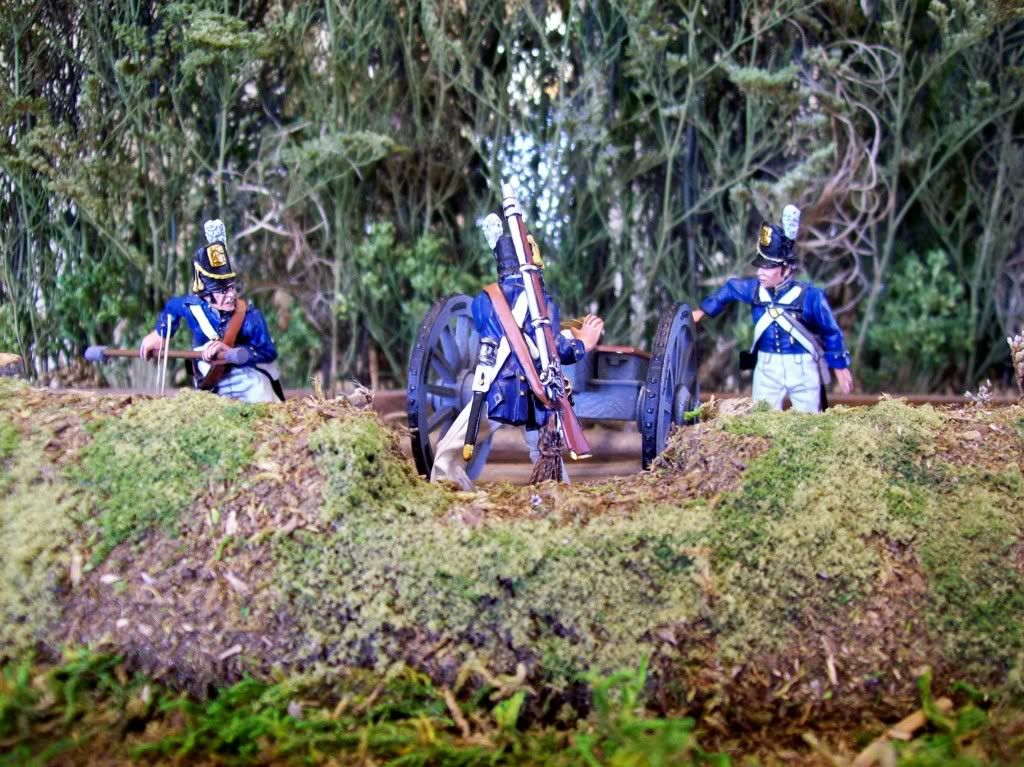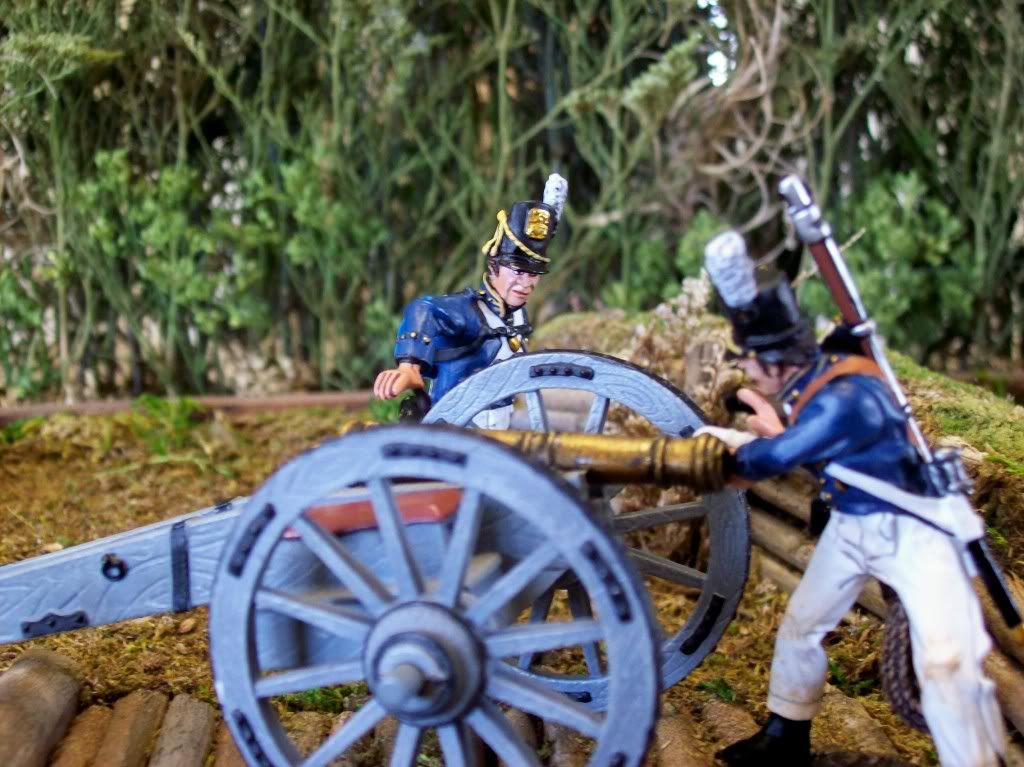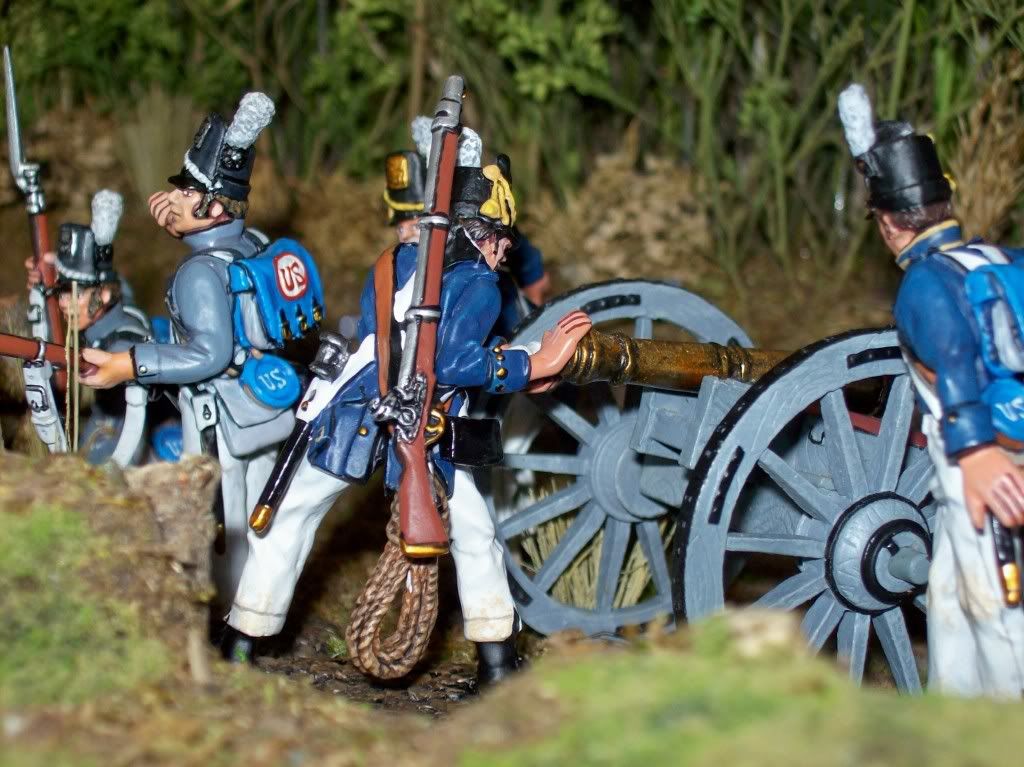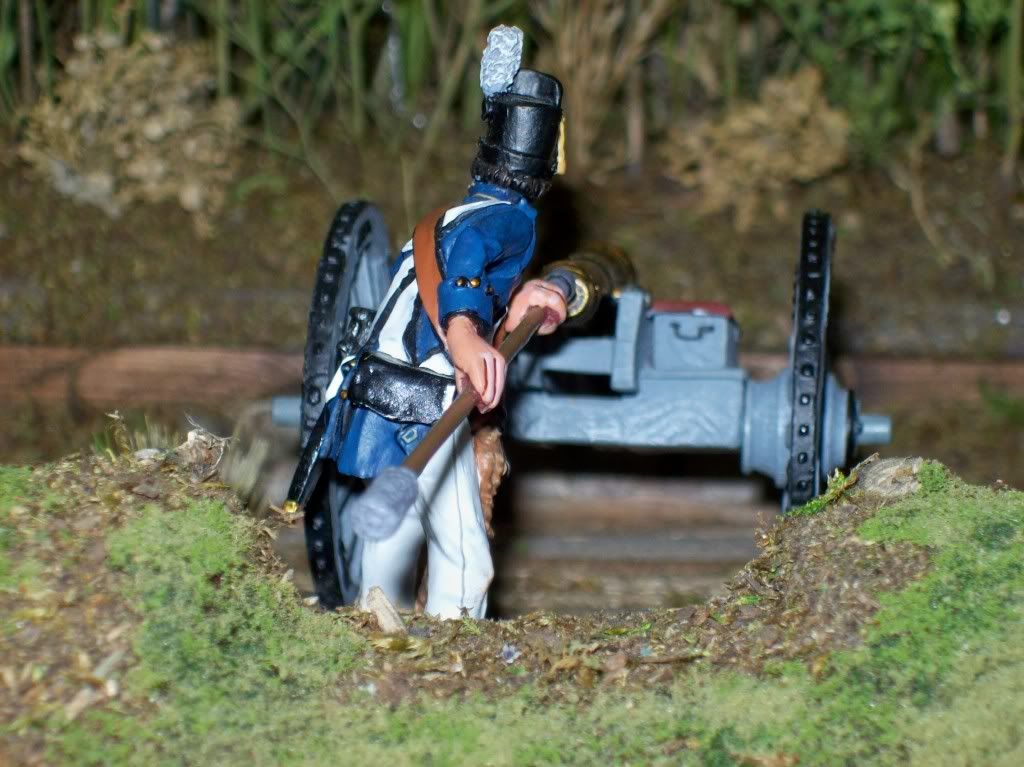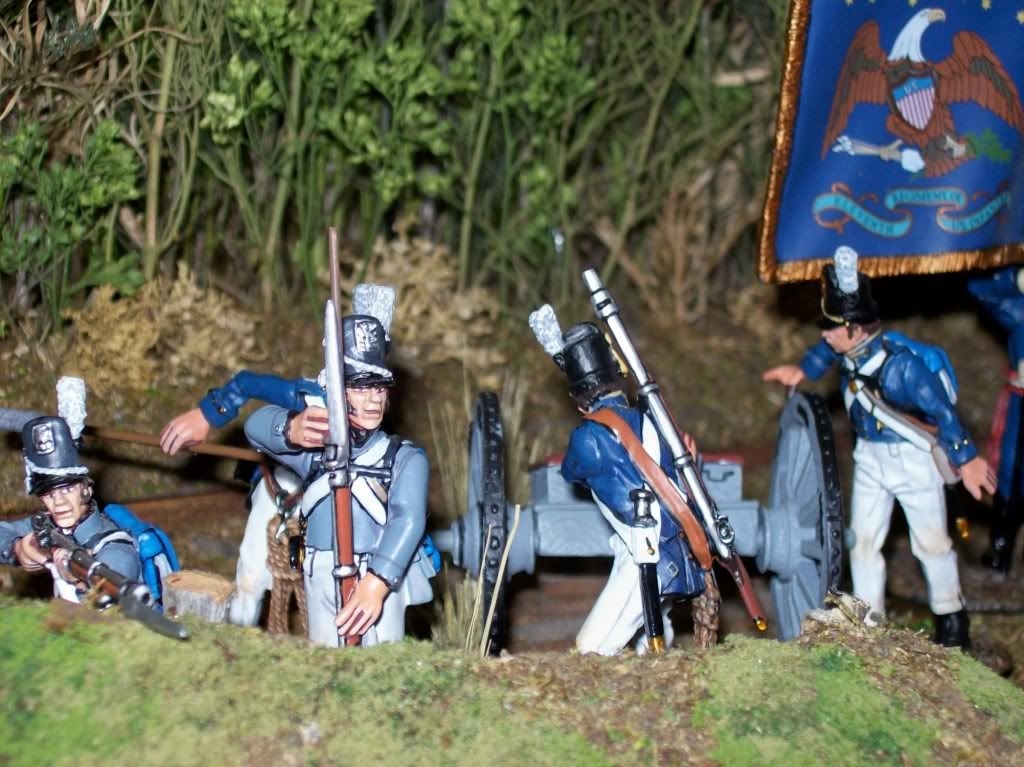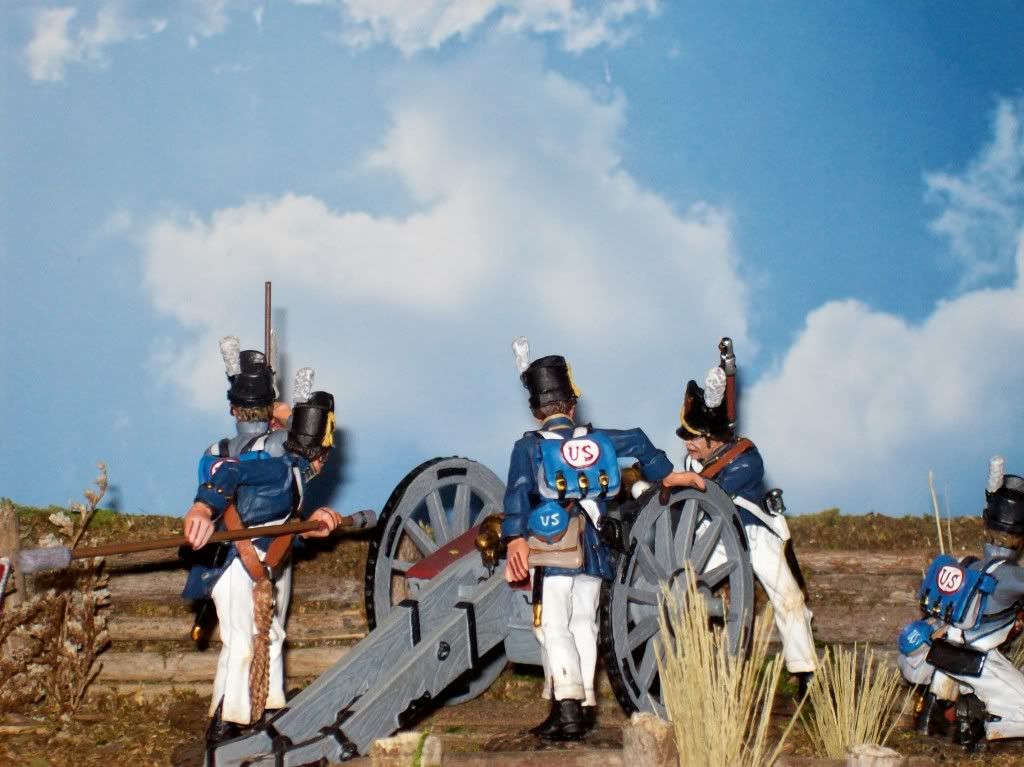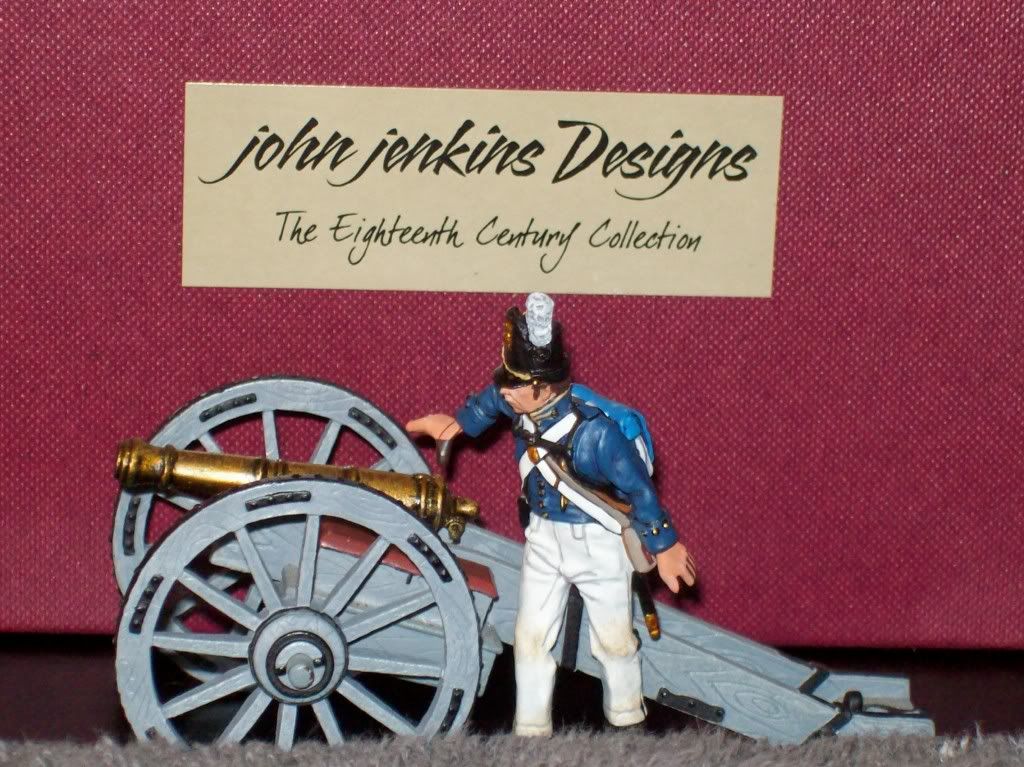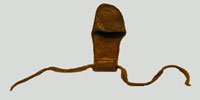John sent me a couple of links today about cannon mishaps...
some interesting cannon facts...
Roundshot...
Ammunition
Smoothbore artillery fired three main types of projectiles - roundshot from guns, shells from howitzers canister from both types.
Roundshot was the most important and numerous projectiles in service and, in the Royal Artillery composed approximately 70-80% of ammunition scale field. A “roundshot", sometimes incorrectly called a "cannon ball", was a solid iron sphere hammered into shape while still hot from the mould. It was used to destroy structures, men and horses.
The heavier the shot, the greater its impact velocity and, thus, a 12-pdr. round was about twice as effective on target as a 3-pdr. shot.
The trajectory of roundshot was fairly flat - leaving the gun muzzle, it dropped steadily until it hit the ground on "first graze" and then ricocheted and continued on to its "second graze" at which point some 80% went on further.
Throughout most of its flight, the shot was below height of a man, skimming, grazing and bouncing until energy was spent. One characteristic of roundshot was that, when it bounced along the ground, it often appeared to be moving slowly. Unwary soldiers sometimes tried to stop it with their feet only to suffer an amputation as clean as that performed by any surgeon. Another characteristic of roundshot and, indeed, of all smoothbore projectiles was that they were sometimes visible during their flight and, given the tactics and formations used during the war, this meant that the intended targets had no choice but to stand still and observe their approach with great interest.
A human target could use this characteristic to advantage as happened with Brigadier General Winfield Scott at Fort George in July, 1814. Scott observed a shell being fired from the fort and, holding up his sword as a gauge, calculated that it was coming directly at him. Putting spurs to horse, he galloped to safety as the shell exploded on the exact spot he had hurriedly left. Such mobility was the prerogative of the mounted officer, the common soldier had no choice but to maintain his position, hold his breath, and pray.
*****Roundshot had a fearsome effect on humans. Tests conducted during the period demonstrated that, under optimum conditions, a 12-pdr. roundshot would, at a range of 600-700 yards, penetrate 36 human beings or eight feet of compacted earth while a 6-pdr. shot would cut through nineteen men or seven feet of compacted earth.*****
Unless fired obliquely or in enfilade, roundshot was less effective against troops in line as it would only kill two or three men but, against troops in close formation, a single shot might kill or wound a dozen or more soldiers. The advantage of roundshot lay in its long zone of effectiveness which made it a useful projectile against targets as close as 250 yards and out to 1,100 yards or more. The disadvantage of roundshot was that it required a high muzzle velocity and its flat trajectory meant that it could not be fired over the heads of friendly troops.
